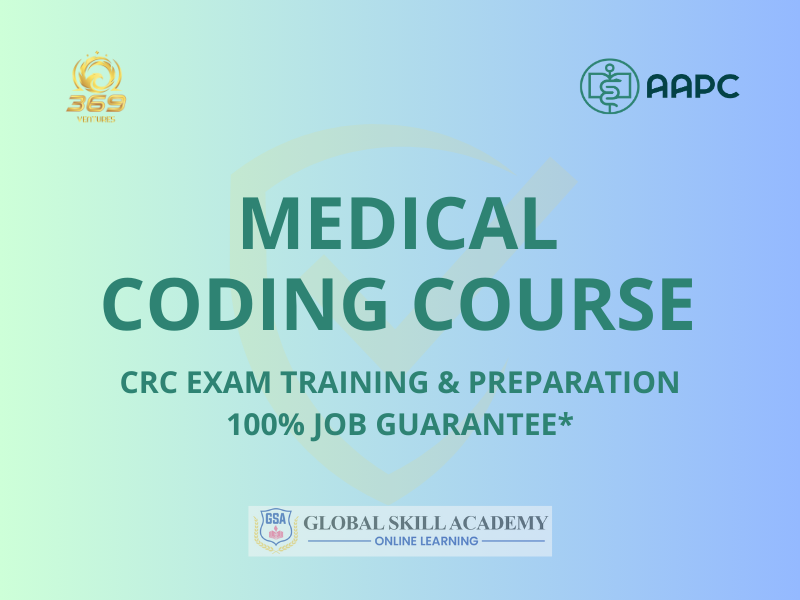Certified Risk Adjustment Coder (CRC) Training & Preparation- 100% Job Guarantee*- 2 Months
We have designed our CRC Training Program with experts who have years of experience in the United States healthcare industry. This program includes comprehensive theory and practical classes, along with regular assessment tests. Eligible students who complete our training program can join our in-house internship program. After successful completion of training, we provide placement assistance for all students.
Eligibility:
- 12th Pass / Any Graduate
CRC Preparation Course Summary
The CRC training course is designed to train professionals in the skills needed for risk adjustment coding. This course provides the expertise to accurately prepare and code medical diagnoses for claims processing. The course covers the following standards:
- ICD-10-CM
- Hierarchal Condition Categories (HCC)
- Medicaid Chronic Illness and Disability Payment System (CDPS)
- Hybrid Models
Course Objectives and Instructional Method
The course follows a step-by-step learning process, starting with concepts and moving to practical applications. It includes:
- Chapter Lectures: Detailed explanations of each topic.
- Reading Assignments: Essential readings to understand coding concepts.
- Module Quizzes: Short tests to reinforce learning.
- Practical Application Work Assignments: Hands-on coding practice.
- Mid-term Exams: Tests to assess understanding midway through the course.
- Mock Exams: Practice exams to prepare for the final certification test.
CRC Course Content:
- Pharmacology: Understanding the effects of drugs.
- Risk Adjustment Models:
- Hierarchal Condition Categories (HCC)
- Medicaid Chronic Illness and Disability Payment System (CDPS)
- Hybrid models
- Predictive Modeling & Quality of Care:
- Impact of predictive modeling on coding
- Ensuring quality care through accurate coding
- Risk Adjustment and Financial Matters:
- Understanding HCC RAF scores
- Financial impact of correct coding
- ICD-10-CM Coding Guidelines: Rules for accurate diagnosis coding.
- Diagnosis Documentation and Coding:
- Common errors in diagnosis coding
- Elements of a medical record
- Documentation Barriers:
- Issues like missing signatures and insufficient documentation
- Risk Adjustment Data Validation (RADV) process
- Frequently Coded Conditions:
- Acute vs. Chronic conditions
- Risk factors and comorbidities
- Common medical conditions and their coding
Curriculum:
- Review of Anatomy and Medical Terminology: Basics of human anatomy and medical terms.
- Introduction to ICD-10-CM and Coding Guidelines: How to use the ICD-10-CM coding system.
- Risk Adjustment Models (HCC, CDPS, Hybrid): Detailed study of different models.
- Predictive Modeling & Quality of Care: Understanding predictive modeling and its impact on healthcare quality.
- Financial Impact of Risk Adjustment Coding: How coding affects healthcare finances.
- Common Errors in Diagnosis Coding: Identifying and avoiding common mistakes.
- Elements of the Medical Record: What makes up a complete medical record.
- Documentation Barriers: Overcoming common documentation issues.
- Practical Diagnosis Coding Skills Utilizing Cases: Hands-on practice with real-life cases.
Benefits of CRC Certification Course Training:
- Expertise in Disease Complexities: Learn about complex diseases and how to code them.
- Impact of Diagnosis Coding on Payments: Understand how coding affects healthcare payments.
- Review and Assign Accurate Medical Codes: Learn to code diagnoses accurately.
- Apply Medical Coding Guidelines: Follow official coding rules and guidelines.
- Audit Process for Risk Adjustment Models: Understand how coding audits work.
- Identify Documentation Deficiencies: Spot and correct errors in medical documentation.
- •Learn Anatomy, Pathophysiology, and Medical Terminology: Gain essential medical knowledge for coding.
CONTACT US NOW !!!
LIMITED SEATS !!!



